Summer is already here with temperatures reaching over 30C and humidity at 60% plus on some days. When I first arrived in Japan more than 30 years ago many trains did not have air conditioning. Instead trains had ceiling fans which on a crowded train during the rush hour were not so effective. Ladies used to also complain that the fans were not good for their hair styles!
That being said, there are still quite a few trains running without air conditioning, mostly on some of the non-JR rural lines, or they have been retrofitted with air conditioning systems that are not always very effective. Although some rail enthusiasts bemoan these modern conveniences—particularly on rolling stock used for steam locomotive (SL) services—the increasingly high temperatures during Japan’s ever-lengthening summers mean that air conditioning is necessary on some of the longer SL runs to attract fare-paying passengers, who ultimately help keep these services operational.
In this month’s edition we have a stack of news items which we hope will be of interest to international rail fans.
If you have any comments or questions please feel free to send them to us info@tsjapanrail.com
Stephen Turner
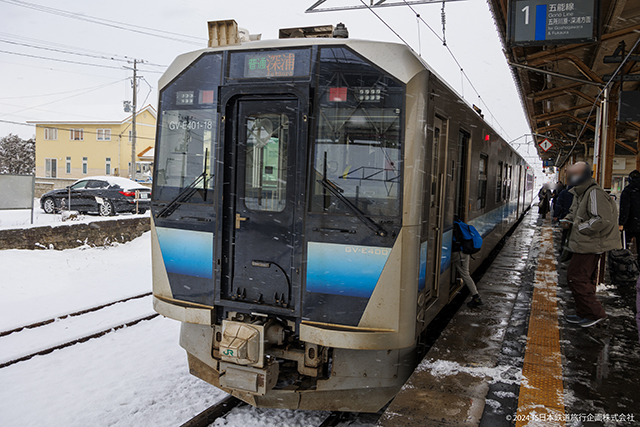
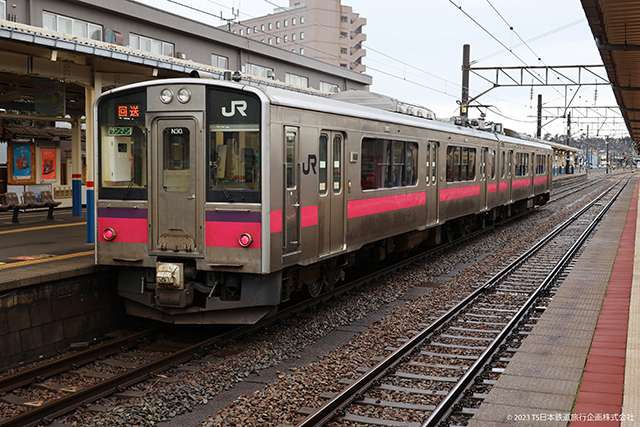
JR East decides to de electrify the Ou Main Line between Shingo and Omagari 701 EMUs permanently replaced with GV-E400s
The Ou Main Line between Shingo (Yamagata Pref) and Omagari (Akita Pref) suffered serious damage following heavy rainfall in July 2024. JR East has decided to “de-electrify” the line and instead use its GV-E400 Diesel Electric trains in place of the 701 electric units that were operating on the line..
The reason for this is primarily that in this area very heavy rainfall is becoming a regular event and with it damage to railway infrastructure. JR East has decided that removing the electrification (25KV AC overhead lines) recovery can be potentially faster. It also has spare GV-E400 units (see next item) that were originally destined for the non electrified section of the Tsugaru Line (between Kanita and Mimmaya) which has been closed due to storm damage in August 2022 and will now be permanently closed from 2027) means that JR East’s Akita Branch has available GV-E400 units.
For passengers the GV-E400 trains are much newer than the 701 series electric multiple units. For JR East a further advantage is that they can operate single car units on less used services. The 701 units are 2 or 3 car units.
In the mean time Akita based 701 series EMUs are now regularly used between Sakata and Tsuruoka and have been used as far south as Atsumi Onsen and area where Niigata GV-E400s are normally used for local services.
JR Tsugaru Line section twill not be recovered and will be legally closed in 2027.
In August 2022 much of Eastern Japan experienced extremely heavy rain fall and several lines were severally damaged. The JR Tsugaru Line section between Kanita and Mimmaya was one section of line to suffer severe damage.
In the past, this route was used by limited express and freight services connecting Honshu and Hokkaido. However, after the Hokkaido Shinkansen line was opened between Shin Aomori and Shin Hakodate-Hokuto, the JR Tsugaru Line segment from Kanita and Mimmaya, previously managed by JR Hokkaido, saw minimal usage and incurred substantial financial losses. Following storm damage in 2022, a Shared Taxi service has been running along the inactive rail section, offering a more convenient option preferred by both local inhabitants and authorities.
JR East’s Cassiopeia luxury sleeper train to retire June 2025
JR East has announced that its Cassiopeia (カシオペア) luxury sleeper train will be retired in June 2026. The 12 car single E26 type unit was introduced in July 1999 operating a regular 3 times a week Ueno to Sapporo sleeper service (out one night, returned the next) with some extra services at busy times. It was a very popular service and difficult to get a booking on the train.
Another feature of this train is that it is unpowered (except for generator to supply internal power) and has to be locomotive hauled.
In March 2016 (outbound 20th March / return 21st March) the regular service ceased. Since then it has been used for charter services, mainly between Tokyo and(Ueno) and Tohoku, although some charter services operated to Hokkaido until 26th February 2017.
Yes, there are some special services running in June 2025. These are charter services and need to be booked through travel agents. Tickets are not sold at JR ticket offices.
Apart from the train reaching the end of its practical life (26 years), JR East also wants to retire the EF81 dual voltage locomotives that are used to haul the train. In fact JR East is in the process of retiring all its main line locomotives.
Yes, there are a number of special charters operating during June that also include some exclusive photographic opportunities and one tour that includes traveling on a freight only line. Unfortunately it looks like these are all booked, but we will be able to let interested rail fans know the schedules a bit later, for those who would be in Japan.
Tokyo Metro Line Yurakucho Line extension from Toyosu to Sumiyoshi will allow Yurakucho Services to travel thru to the Tobu Skytree Line via the Hanzomon Line
Tobu Railway and Tokyo metro have signed an agreement that will allow Tokyo Metro’s Yurakucho Line services to run via the Hanzomon Line to operate through services to the Tobu Skytree Line, once the Yurakucho Line branch from Toyosu to Sumiyoshi is completed in the 2030s which will connect to the Hanzomon Line at Sumiyoshi which already runs through to the Tobu Line at Hikifune.
One significant point of this is that it will connect the separate parts of the Tobu network which serve the North Western part of Tokyo and in Saitama (Tobu Tojo Line) and the North Eastern part of Tokyo and into the eastern side of Saitama prefecture.
When the 201 series was introduced in 1979, it was technologically advanced for its time—designed to be more energy-efficient in response to rising energy prices following the oil crisis earlier in the 1970s. The trains were also significantly lighter than their predecessors.
In the Tokyo area, they were used on the Chūō Main Line (both rapid and Chūō-Sōbu local services) and the Keiyō Line. In the Kansai area, they operated on several lines, including the Tōkaidō Main Line, San’yō Main Line, Kosei Line, Fukuchiyama Line, and later the Kansai Line (Yamatoji Line section), Osaka Loop Line, and Osaka Higashi Line. JR East retired its 201 series trains in 2011.
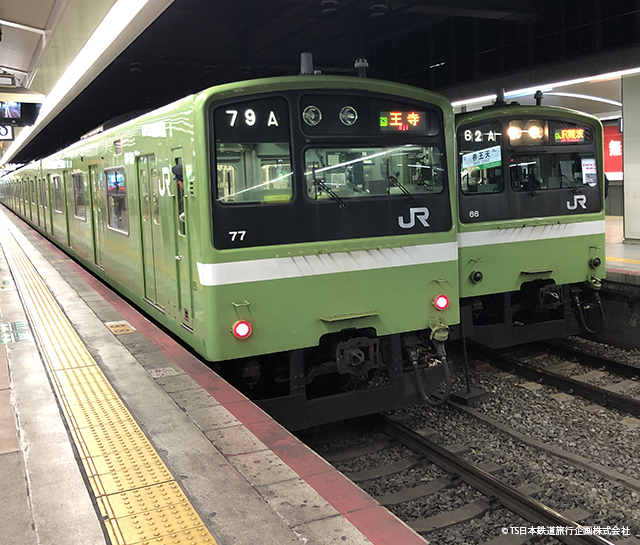
Freight on Shinkansen – JR East to start regular freight services on Shinkansen Trains
JR East has started a regular freight service on its Tohoku Shinkansen line between Shin Aomori and Tokyo. Although JR East had carried freight on its shinkansen trains on occasions this was mostly in respect of special events and usually involved transporting very fresh food for farmers markets or special restaurant events being held in its stations.
Every Friday a Tohoku Shinkansen service from Shin Aomori will have two cars reserved for carrying up to about 200 standard size boxes between the seats. This will be a revenue owning services with businesses being charged around ¥2,000~¥3,000 for a 120cm box.
JR East is also planning to convert an E3 shinkansen to a “freight” shinkansen with all seats removed on its 7 cars and to be used solely for freight. It has also announced that its new E10 shinkansen expected to enter service in 2027 will have its car 5 designed to carry freight including having wider doors to help with faster loading and unloading particularly at intermediate stations.
JR West and JR Kyushu are also looking at developing shinkansen freight services.
JR Freight withdrawing JNR era locomotives from regular services
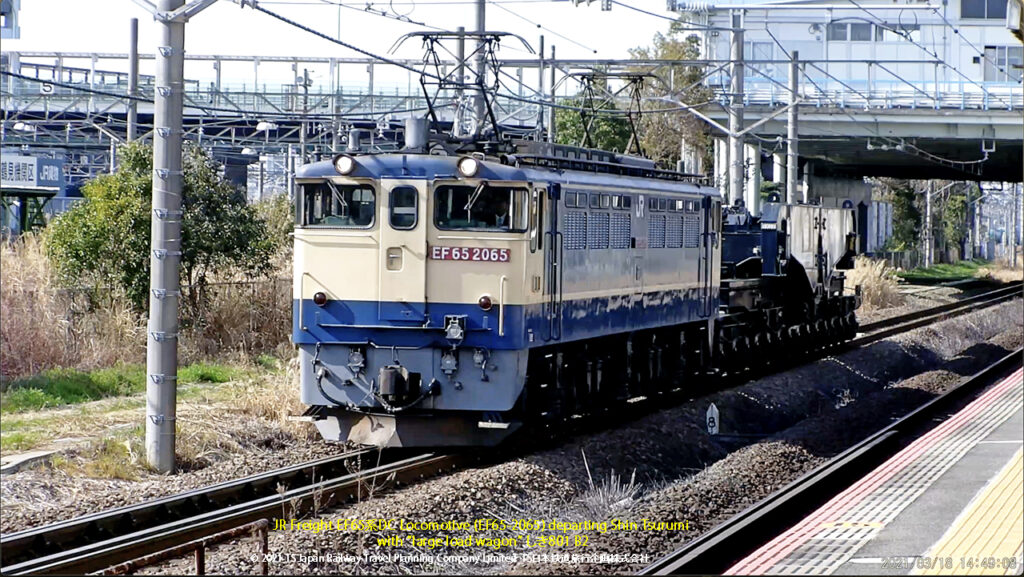
- Shin Tsurumi based EF65s (1500V DC EL)
- Moji (Kyushu) based EF81 (1500V DC / 20KV AC EL)
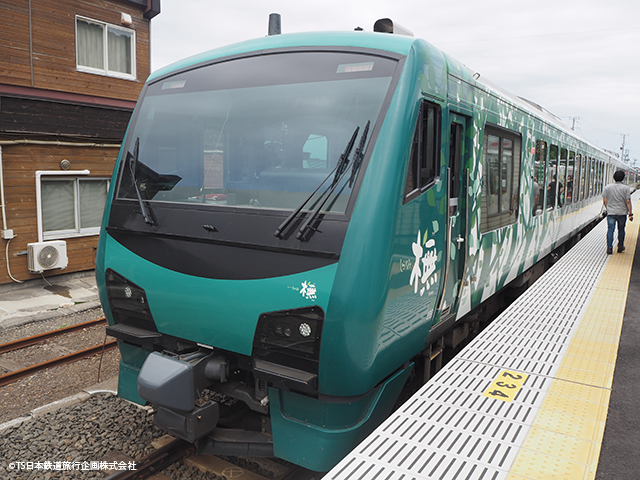
JR East will retire one of the three Resort Shirakami tourist trains in 2025—“Buna” (橅), which was introduced in 2016. It is a hybrid diesel HB-E300 series train (HB-E301-5 / HB-E300-105 / HB-E300-5 / HB-E302-5) that operates along the scenic Gono Line between Aomori/Hirosaki and Akita.
The train is named after the buna (beech) trees, native to the UNESCO World Heritage-listed Shirakami-Sanchi region. Its interior, designed by Ken Okuyama, features local beech and cedar woods and is equipped with wide panoramic windows to enhance the sightseeing experience.
The resort Shirakami will continue to operate current schedules using the two other Resort Shirakami Trains (Kumagera (くまげら) a KiHa48 DMU and Aoike (青池) a HB-E301hybrid diesel train.)
On June 7th the Resort Shirakami Buna will run a special return service on the Tadami Line between Aizu Wakamatsu and Tadami. The Tadami Line is as equally scenic as the Gono Line.
2025 also see the 100th anniversary of the Uetsu Main Line that runs along the Japan Sea Coast in Niigata, Yamagata and Akita prefectures between Niitsu and Akita. One of the events to celebrate this will be the final in service run by the Resort Shirakamai “Buna” from Akita to Niitsu and returning the next day to Akita. The special run will take place on the 12 July (Akita->Niitsu) and 13th July (Niitsu->Akita). This will be the final run for the Resort Shirakami Buna train. The Uetsu Main Line is another very scenic line.
Tokyu to redesign external livery on some of it train lines.
Tokyu has announced a redesign of the liveries for the Meguro Line 3000 series, Toyoko Line 5050 series (8 car) and the Denentoshi Line 5000 series trains.
The designs were selected from those submitted by Tokyu staff in an internal competition. It is worth noting that with the introduction of platform doors at all stations on all three of these lines, the traditional liveries with a coloured line denoting which line the train was primarily operating on running down the middle of carriages no longer works, hence the new design has the line colours higher up on the train.
The Oimachi Line was not included in the competition as its 9000系 & 9020系 units will be replaced starting in 2027 with new trains.
TS Japan Rail News
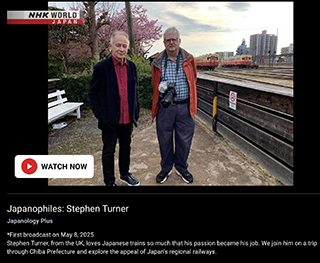
TSJR’s Turner featured on NHK World’s Japanology Plus
Watch the program on NHK World’s website (available as video on demand). The program was filmed on the Kominato Railway in Chiba Prefecture, not far from Tokyo.
Recent TS Japan Rail Posts of interest to Rail Enthusiasts…
Four Rural Railways in Chiba Prefecture
In this article on our main site we take a look at 4 railway lines in Chiba Prefecture that we think are interesting to both railway enthusiasts and tourists. The four lines are Choshi Dentetsu Line, Kominato Railway, Isumi Railway and JR Kururi Line.
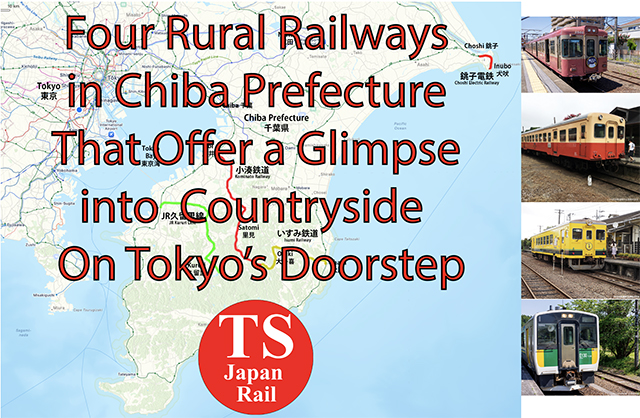
- JR Shikoku has introduced a new rail carrier train. Based on the JR Tokai KiYa 97 rail carrier that JR East has also adopted (KiYa E195), the trains with cabs at both ends have been designed to eliminate the need for locomotives to haul wagons carrying rails between p/w depots and worksites and to eventually avoid the need for JR passenger rail companies to have locomotives on their rolling stock books.
- Hanshin to introduce new 3000 series Express Train.
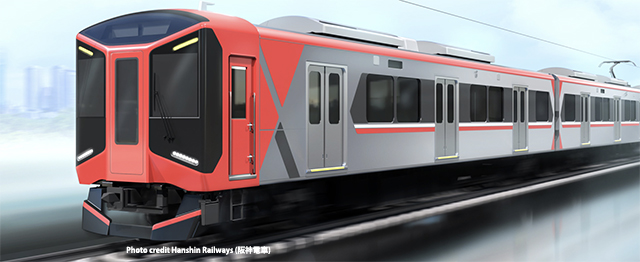
Hanshin, which is part of the Hankyu Hanshin Group competes with Hankyu and JR West for passengers travelling between Osaka~Kobe. With both Hankyu and JR West having introduced premium seats cars / trains on their Osaka~Kobe routes, Hanshin has decided to also do so with its new 3000 series train. the six car train will have one car with premium seating (reservations required). The first train will be introduced in 2027.
- Snake causes a short circuit and power outage on the Tokaido Shinkansen on the 30th April, a snake that had climbed a pole supporting overhead power lines caused a short circuit bringing all trains between Gifu Hashima and Maibara to a halt for about 1 1/2hrs. The incident occurred at 5:25pm and was not resolved till about 7pm. 86 trains were affected. Due to the Golden Week holiday train services were busy. Snake and other animal problems are not rare in Japan.
- JR Hokkaido’s Soya Line was suspended for a few days in April following a derailment thought to have been caused by snow accumulation. Track repairs took longer than expected as snow melt also made the ground unstable.
- JR East’s KiHa100 diesel cars are now only in regular service on the Kitakami Line
The Kitakami Line runs between Yokote and Kitakami and after KiHa100s being withdrawn from the Ofunato Line where they have been replaced by KiHa110s. KiHa100 (incl KiHa101) & KiHa110 (incl KiHa111 & 112) were introduced by JR East in the early 1990s. JR East is now looking to eventually replace all these trains with more fuel efficient models such as Hybrid Diesels.
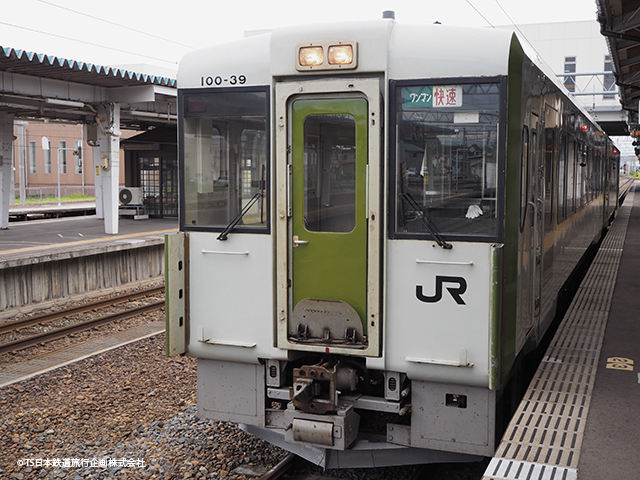














Comments